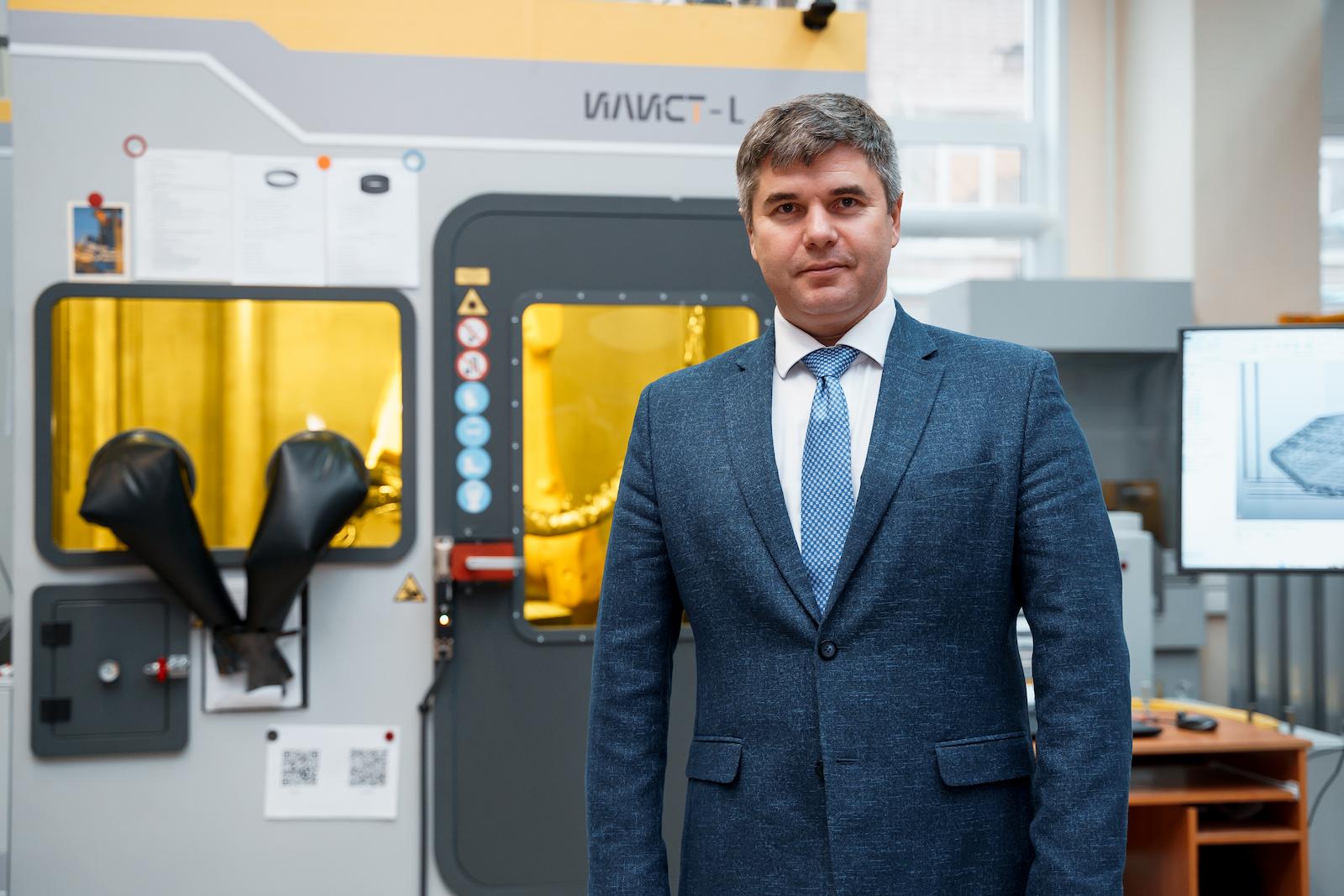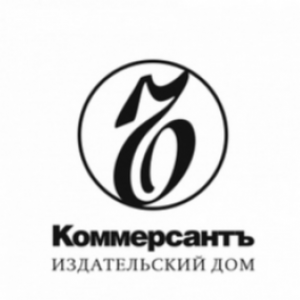Samara University enhances the number of research projects carried out in its industrial partners’ interests. Last year, the Samara enterprise PJSC “UEC - Kuznetsov” introduced into production a new technology for manufacturing parts, developed by Samara University. Why was the new technology unique, and why did it even need to change anything in the production process? Can the University’s development be applied by other Russian enterprises? Vitaly Smelov, Director of Samara University’s Institute of Engine and Power Plant Engineering (IDEU), answered these and other questions to “Kommersant-Nauka”.

- At the end of last year, the University completed developing the technology for the additive manufacturing of parts and components of the hot part of industrial gas-turbine engines. Why is this technology unique? And what tasks was the technology introduced for?
“At our University, since 2010, there has been the Laboratory of Additive Technologies (the process of manufacturing parts by layer-by-layer addition of material, ed.). Initially, we developed and practiced the process of 3D printing with plastics, then mastered the technologies of rapid prototyping and casting of metals using smelted models. For almost ten years, we have been engaged in laser welding and “growing” parts of various applications from metal powders. New technologies are always of interest to our industrial partners, because the speed of innovation in large manufacturing companies is not very high, whereas on the basis of universities, high-tech sites, where the most promising, even frontier projects to be developed, especially in the field of additive manufacturing, are established. First of all, 3D printing metal technologies can be efficiently used in manufacturing knowledge-intensive and high-tech products, because they make it possible to achieve a significant economic effect - to reduce cost price and production time. For example, in the combustion chambers of gas-turbine engines, there are components made of chromium-nickel alloys, which are very difficult to be processed with blade tools. The conventional technological process is based on the use of exact casting, rolling, welding, post-processing. The large number of technological rigging and control devices are used. Hence, in production, the task of reducing labor intensity and metal consumption arises, since in some cases up to 80% of the workpiece mass is lost, turning into metal chips.
In 2021, together with PJSC “UEC-Kuznetsov”, we issued the application for implementation of the comprehensive project and organization of high-tech production of industrial gas-turbine engines, applying the intelligent system of design and technological training for improving functional parameters. The work was funded from the budget of the Ministry of Science and Higher Education of the Russian Federation, while PJSC “UEC-Kuznetsov” co-financed the project from its own funds.
The final result of the project was organizing high-tech production of industrial gas-turbine engines on the basis of the enterprise, introducing the intelligent system of design and technological preparation of production (KTPP) of parts and assemblies of the hot part of industrial GTE using optimized designs of engine parts verified on the technological engine and parametrically related additive manufacturing technologies, measures for reducing labor intensity and production costs by 30–40%, improving operational manufacturability and functional parameters of these parts on the basis of the single digital platform for designing, producing and testing industrial GTEs.
The project is unique for several reasons. It was one of the largest for the University in terms of funding and research in 2021. The project took three years to complete. Under the contract with the company, the University could purchase the laboratory installations, as well as the equipment at PJSC “UEC-Kuznetsov” was modernized. The additive technology for producing hot parts of GTEs proposed by us involves two methods to be applied. Firstly, it is the technology of selective laser fusion. Secondly, the technology of Laser Metal Deposition. It is designed for manufacturing large-sized products, with their diameter of up to two meters.
The key technologies of additive manufacturing of industrial GTEs are aimed at resource saving and the increase in manageability of the life cycle of the finished product. By reducing the number of production operations and rigging, increasing flexibility and adaptation of the production to requirements of promising industrial GTEs, the synergistic effect of virtual tests, simulation modeling and optimization of technological processes, the value chain has been improved: reducing the time and cost of production and repairs of gas-turbine engines, increasing the service life and resource”.
About the University
Samara University is one of 29 national research universities in Russia and is among the participants in the Federal Projects “Priority 2030” and “Advanced Engineering Schools”. The University ranks 45th in the rating list of the best universities in Russia, according to the RAEX Rating Agency (Expert RA). It is among the TOP 20 best universities in the country, according to nine subject ratings, in the TOP 10 best innovative universities in Russia, in the TOP 3 best universities in the country in the field of aviation and space-rocket engineering. 82% of the University’s graduates are employed within six months after graduation.
- Are the solutions proposed by the University applicable to other domestic enterprises?
“Now we receive the large number of requests from completely different enterprises for experimental developments using additive technologies. The undeniable advantage of this technology is undoubtedly significant reduction in production time and resource savings, since technological preparation and additional equipment are not required at the enterprise itself.
This technology provides manufacturers with completely new functionality when designing engines. If previously a product of complicated geometric shape was made in several stages, 3D printing makes this process much faster, more accurate and more efficient. With its help, designers and technologists can develop the manufacturing process for any product, set the necessary geometric shapes, select optimal fusion modes, and evaluate parameters of the material in the finished part.
We plan to continue participating in development of new technologies for other enterprises. Moreover, the University can act as a contractor for engineering and industrial manufacturing of functional products, will be integrated into the cooperative supply chain. For example, products made of difficult-to-process or special materials. Currently, on the basis of Institute of Engine and Power Plant Engineering, we are developing the project on the joint large-scale production of small-sized gas turbine engines, using additive technologies. It is assumed that the products can be in demand by several enterprises at once, and not only in the Samara Region”.
- Such close cooperation with enterprises is beneficial not only for scientists. What are the advantages for the University’s students? Are they involved in research projects?
“Any such large-scale project is a new challenge and an ambitious goal. Implementation of such projects makes it possible to take the Institute’s team to another level, improve competencies. In fact, on the basis of the University, the new infrastructure intended for solving multidisciplinary tasks, such as, for example, materials science and mechanical engineering technologies, laser synthesis physics and computer modeling, is being created. Indeed, the work from our Institute was performed by the youth team of the Laboratory of Additive Technologies, the share of young scientists under the age of 39 was 70%, with participation of leading scientists and young engineers from several departments of our University. Students and postgraduates were involved in the process. Due to this, they immersed themselves in the profession, by participating in real projects”.
In 2023, Samara University completed 93 scientific projects in the interests of its industrial partners.
- Now large-scale work on increasing the prestige of engineering education is underway at the state level. 50 advanced engineering schools have been established, including one at Samara University, the number of budget places in universities in technical areas of training grows. Are employers ready to provide all graduates of the University with jobs?
“Indeed, within Samara University’s Advanced Aerospace Engineering School, today we create entire teams of specialists capable of solving non-standard engineering tasks. Our students, in particular, develop small-sized gas-turbine engines for drones, another team is engaged in designing rocket engines, internal combustion engines, automation, robotics, etc. The University’s task is catching trends in development of science and technology, and making sure that after five years of study, our graduates will have in-demand and the most advanced competencies.
Herewith, it is important that our industrial partners also participate in training the graduates, organizing industrial practice or investing in the University’s infrastructure through financing scientific research. There is also a practice of organizing joint design bureaus, when the 2nd or 3rd-year students are already involved in solving scientific problems in the interests of a particular enterprise. The enterprises themselves are interested in this format, because they get the opportunity for interacting with students and attracting the best of them to work. However, our graduates can also choose the enterprise they would like to work at. The companies really hunt for them”.
- What other projects do you implement with other industrial partners?
“The Engineering Centre on the basis of our Institute works in the interests of several industrial partners who need new technologies for solving applied problems. These are the Samara cluster of defense industry companies: “Metallist-Samara”, “Aviaagregat”, several enterprises of the United Engine Corporation Holding: “UEC-Kuznetsov”, “UEC-Aviadvigatel”, partners from other regions. This cooperation provides a significant amount of funding. Following the results of last year, the total cost of research work performed by the IDEU for industrial customers amounted to over 300 million rubles. This allows us to improve skills of researchers and students, develop the material and technical base and the infrastructure, that is, laboratories, equipment, software. And, consequently, to receive new orders from our industrial partners unable to independently carry out the complex of various studies within their production facilities”.
For reference:
What work has been done by Samara University’s Institute of Engine and Power Plant Engineering for implementing the technology of additive manufacturing of gas-turbine engine parts
Customer (industrial partner): PJSC “UEC-Kuznetsov”, part of the Federal Holding “United Engine Corporation”
Term of work: 2021–2023
Project objective: Organizing the high-tech production of industrial gas-turbine engines
Stages of work
- Within the project, the IDEU developed the comprehensive technology for additive manufacturing of parts and assemblies of the hot part of gas-turbine engines. The technology was tested on five types of parts of the low-emission combustion chamber: a burner device, outer and inner casings of the combustion chamber, as well as outer and inner rings of the pre-swirl system.
- The methodology of digital organizational design and technological preparation of additive manufacturing has been created.
- The intelligent system of integrated design and technological preparation for production of parts of industrial GTE has been created.
- The ILIST machine for technological laser deposition has been modernized in the interests of PJSC “UEC-Kuznetsov”, the industrial partner of the project.
Source: kommersant.ru
 RU
RU  EN
EN  CN
CN  ES
ES 